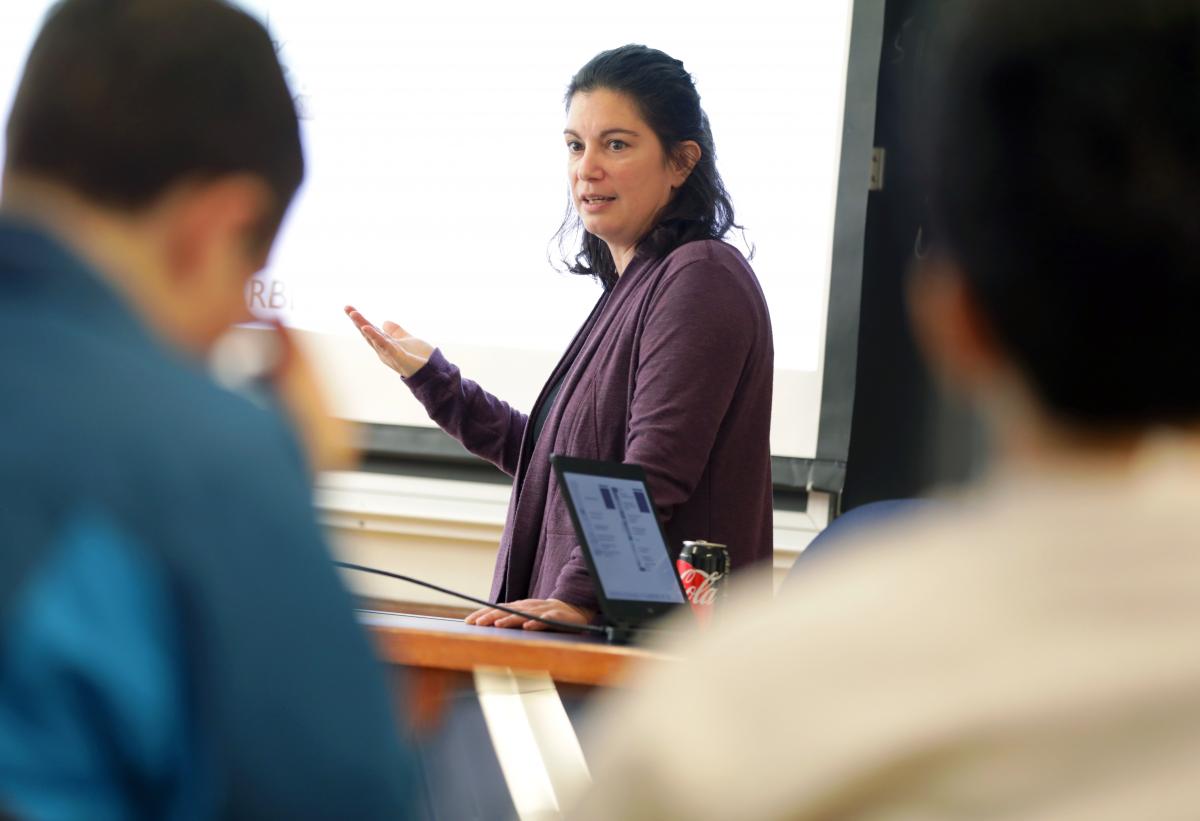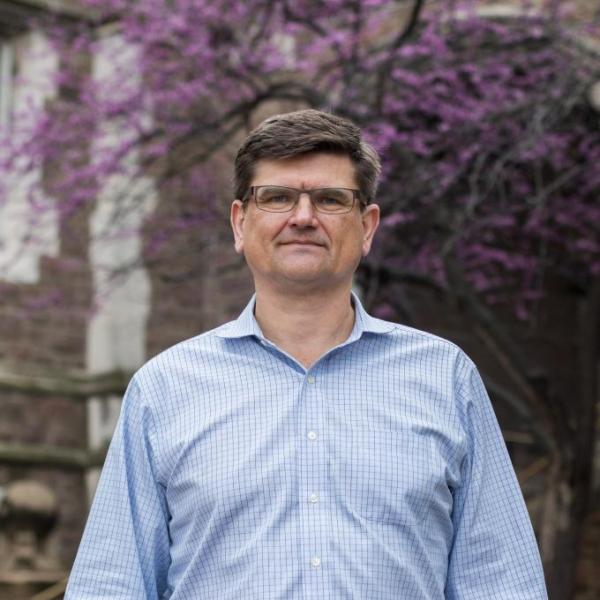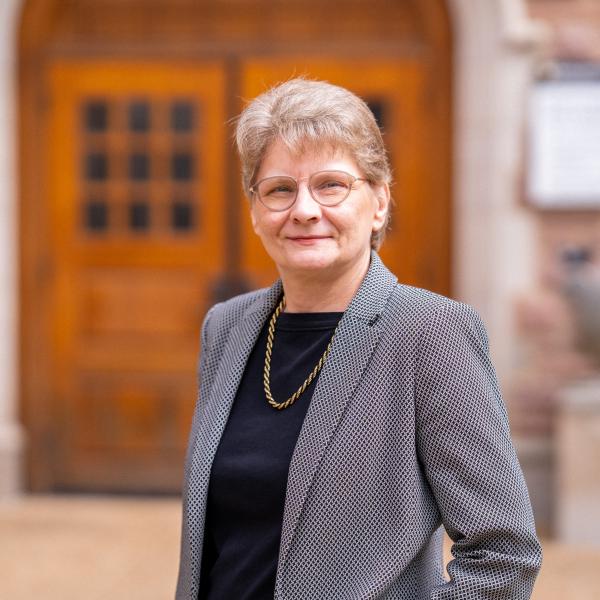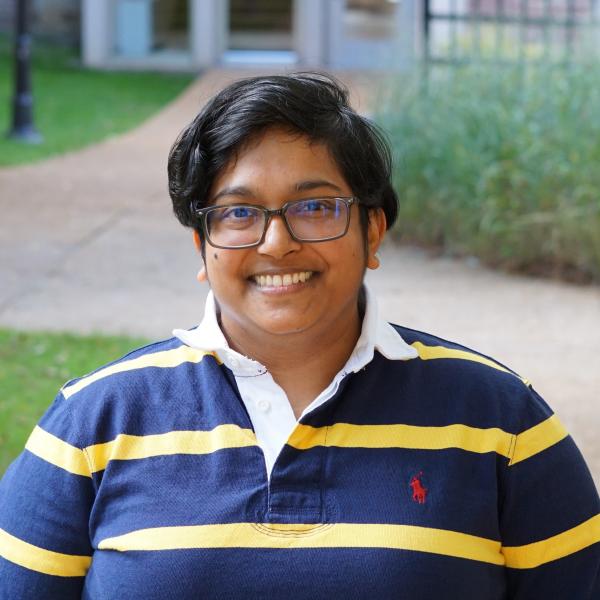Before beginning her new role as vice provost for educational initiatives, Jennifer R. Smith took part in a Q&A with the Ampersand to reflect on past successes and future goals for enhancing the undergraduate experience at Washington University.
As dean of the College of Arts & Sciences since 2012, Smith has been responsible for the university’s liberal arts curriculum. Under her leadership, Arts & Sciences has strengthened programs focused on student success, including enhancing support structures for first-generation and low-income students. As expressed in the video above, she is also greatly admired and appreciated by students and advisees in Arts & Sciences.

After nine years as dean in Arts & Sciences, how does it feel to be starting a new chapter in the Office of the Provost?
It's exciting and bittersweet. One of the things I love about working with Arts & Sciences students is the diversity of interests and academic fields. Now, I get to learn about the art curriculum and the biomedical engineering curriculum and the finance curriculum. For somebody who loves breadth in education, the chance to dive in and learn about other models of undergraduate education is really exciting.
Overall, it feels like part of the same journey. When I started teaching, I just knew the students who chose to take my geology classes. Then I started advising Earth and planetary sciences majors, and I started to think about how my classes fit into the major experience. Then I became a four-year advisor, and I started to think about how a student's major fits into the overall degree curriculum. Then I became a faculty associate spending time with students living on the South 40, and I started to think about how the academic experience fits into the holistic student experience. This feels like another logical step. In many ways, it feels natural.

Shortly before becoming dean of the College, you stated that your goal was "to ensure a transformative experience for every undergraduate student who receives a degree from or takes classes in Arts & Sciences." Did that remain your goal?
The amazing thing about transformative experiences is that they can happen in a second, they can happen over a semester, and they can happen over the entirety of a student's four years in college. I think I imagined when I started that there would be a formula; if everybody just did x, they would have an epiphany. And of course, that's not how it works. There's so much contingent about what triggers that transformation. So I think I've shifted somewhat from thinking about how the experience can be transformative for everyone to thinking: How do we meet everyone where they are, to set the stage for that transformation? How can we help faculty and departments embed that goal of transformation into everything they're doing, so that we have a better shot at hitting each of our students at the moment that they're ready?
How did you go about laying the groundwork for these transformative experiences? Is there any development that makes you particularly proud?
My predecessor, Jim McLeod, famously articulated our mission and goal to "know each student by name and story." It's so valuable to know individual stories. But when I started as dean, the College wasn't working very often with data. I'm a natural scientist, and I really believe that you need both – the individual story, and also the broader data on student experience – to think productively about things like programs, student outcomes, and how we can intervene to support student success. Bringing a focus on data into the College, while continuing to value the richness of the individual story, is something that I'm proud of.
What are some examples of types of data you gather, and why?
We're particularly looking at issues of equity. We're looking for places where we might see evidence of structural biases impacting student performance, and really becoming sensitive to that, and working to implement changes such that all students can thrive. The university has tripled our percentage of low-income students in the time that I've been here, so it's important that we're advising students based on the best evidence of what supports their success.
In what ways will the duties of your new role as vice provost for educational initiatives overlap with your current work? In what ways will the job be different?

The focus on equity, and really interrogating our student data to understand where we need to break down barriers – that's something that I am excited about working towards at the level of the whole undergraduate student body. I want to take that work and ultimately move beyond just making sure that students all hit some basic benchmarks. Yes, we want all students to be equally likely to graduate, or to stick with us from the first to the second year. But that's not thriving, necessarily. We need to do better than that.
Ultimately, we want to know that students are able to take advantage of the opportunities that aren’t required to graduate but are part and parcel of that truly transformative experience, and great preparation for whatever comes after college: study abroad, research, internships, honors theses, civic engagement, service, critical reflection on themselves and their goals and values. Across the university, we need to ensure that opportunities like these are accessible to first-generation and low-income students in the same way they're accessible to other students.
So that’s a major source of continuity. A particularly important difference for me is that I get to go back to teaching regularly. I cannot wait until next spring when I get to teach "Earth and the Environment" again. Teaching that class is my favorite thing to do in the world. I really, really can't wait.

So many WashU students and alumni have a memory of you with their class quilt, which hung in your office and became an annual part of the Arts & Sciences Recognition Ceremony. How did the quilt tradition get started?

One of the challenges for me in this role has been growing into the expectation that I will come in and drop words of wisdom on students at various milestones in their careers. I started the job on July 1, 2012, and already looming over me was that later in August I was going to have to get up in front of the whole first-year class and give them some kind of advice. I didn't want it to just be some random lady on a stage telling them things that they were probably going to forget before I had even finished speaking, because they were mostly worried about finding a place to have lunch or who would be their friend. I wanted it to be participatory in some way. The quilt came out of that desire for participation, and also to make tangible the commitment to knowing each student by name and story.
Coming back to the idea of transformative experiences – I think what students don't appreciate is how much their goals will change, that they will find goals that they would never have been able to imagine their first year. I wanted them to create a record of what they were hoping for at the beginning. Of course, not everybody takes the exercise seriously, and that's okay. Whether a student's goal is to make a major discovery or to get really good at Mario Kart, I loved having a reminder hung on my wall of 1,000 unique students and where they each were at the beginning of their college career.
If you were going to write your own quilt square before beginning this new phase of your career, what would it say?
What do I hope that I will achieve in the new role? That's a tough thing to fit on a few square inches of fabric. I keep coming back to equity. While each individual student’s story and experience will be different, my hope and goal is that every student we admit will feel that they belong at WashU, that they are fully able to participate in everything that we love about the WashU educational experience, that each will grow beyond what they could have hoped for themselves when they started.




